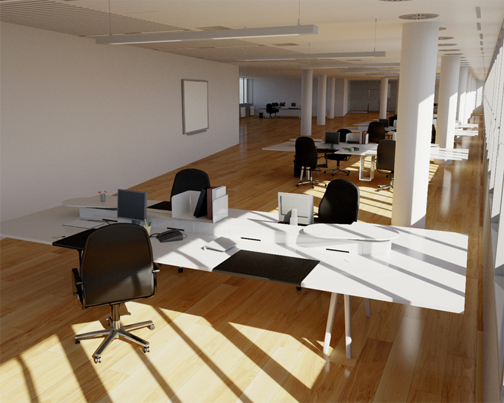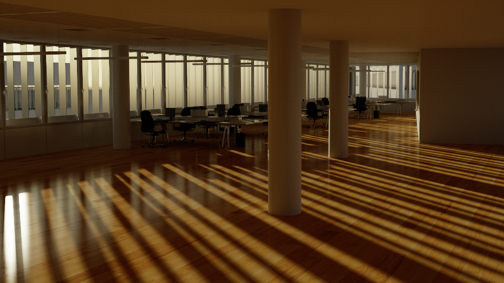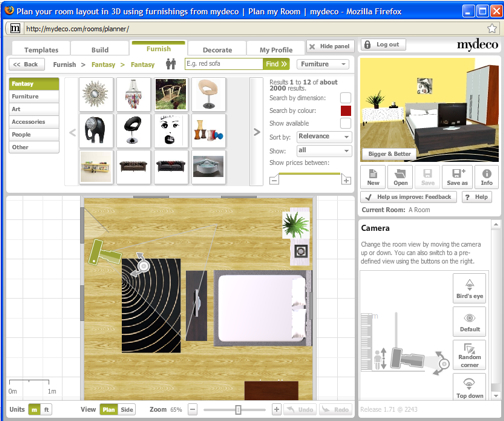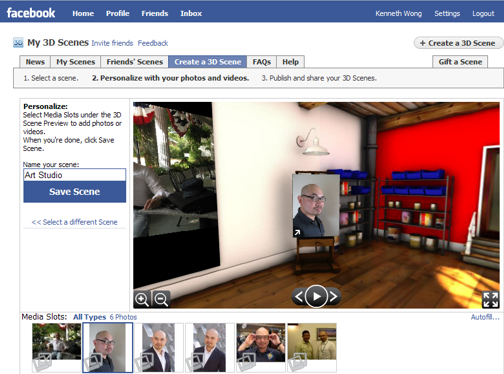Latest News
October 21, 2009


One of the prerequisites of 3D modeling is patience. You position your objects, set your scene, click the render button, then you wait ... and wait, and wait, and wait. The progress bar shows your image is 2% completed; when you return from lunch, it will be at 40% (or so you hope). As powerful as your CPU is, it’s no match for the complex equations that arise from the need to figure out the correct behavior of light, the way it bounces off surfaces. So you learn to cope with this involuntary idleness by pacing, doodling, or bird watching.
But if you could tap into the combined horsepower of all the processors in a remote server or a computing cluster, accessible via a standard browser, the photo-realistic image that takes your machine hours to produce might be completed in a matter of minutes or seconds. That would make real-time (or almost real-time) ray-tracing possible over the Web.
That’s essentially how NVIDIA anticipates we would work in the future. In fact, the future was yesterday. That was when the GPU maker launched NVIDIA RealityServer, a cloud-computing platform powered by a combination of NVIDIA Tesla GPUs and iray rendering software.
Rendering in the CloudNVIDIA broke the news to a group of technology reporters and industry analysts at the Westin Hotel in downtown San Francisco, during the Web 2.0 Summit. Dan Vivoli, senior vice president of NVIDIA, hoped RealityServer would catapult “3D [rendering] into a ubiquitous experience on the Web.” Applications running on the platform are expected to work on “any devices connected to the Web” and support “thousands of concurrent interactive users.”
RealityServer and iray are both part of mental images’ product line. When NVIDIA acquired the company in December 2007, they became part of the GPU maker’s portfolio. NVIDIA calls the latest release of RealityServer “the culmination of nearly 40 collective years of hardware and software engineering.” The company announces, “A developer edition of RealityServer 3.0 software will be downloadable free of charge, including the right to deploy non-commercial applications November 30, 2009.”
iray is described by its makers as an “interactive and physically correct, photo-realistic rendering.” mental ray software, also from mental images, is incorporated into products from the company’s OEM partners, which include Autodesk, Dassault Systemes, PTC, and SolidWorks.


Remote Viewing
Project Showroom, now hosted at Autodesk Labs, is an example of what’s possible with remote rendering. The interactive application is ideal for interior decorators and retailers who wish to provide a virtual showroom where consumers can experiment with various configurations of flooring, lamps, furniture, appliances, and accessories. A similar approach could be deployed by automakers and consumer goods suppliers to allow buyers to visualize the merchandize online in their preferred colors and optional add-ons, using a 3D model and real-time rendering.
David Kelly, CEO of mydeco.com, a U.K.-based designer furnishing site, said, “Our interactive 3D planner, which uses RealityServer, is what attracts customers to mydeco, and the immersive, real-life experience it delivers keeps them engaged.” Similarly, Mark Zohar, CEO of SceneCaster, said, “NVIDIA RealityServer is an integral part of our 3D Scenes application on Facebook.”
At the present, interactive rendering over the Web is hampered not only by bandwidth limitations but also by the hardware investment required to support hundreds to thousands of concurrent users. Deployable Web applications like the room designer at mydeco.com usually keep the amount of details and illuminations in real-time rendering at a bare minimum to avoid overtaxing the backend systems.
Remote rendering, or rendering in the cloud, holds great appeal to many 3D artists who make a living churning out industrial designs and digital contents. Purchasing and maintaining a computing architecture that lets them render on the fly is a luxury only a few can afford (for example, those working at Dreamworks or Sony). For the rest, tapping into a remote server with computing power exponentially greater than their CPUs to do the job is a more realistic—and economical—approach.
Subscribe to our FREE magazine, FREE email newsletters or both!
Latest News
About the Author
Kenneth Wong is Digital Engineering’s resident blogger and senior editor. Email him at [email protected] or share your thoughts on this article at digitaleng.news/facebook.
Follow DERelated Topics






